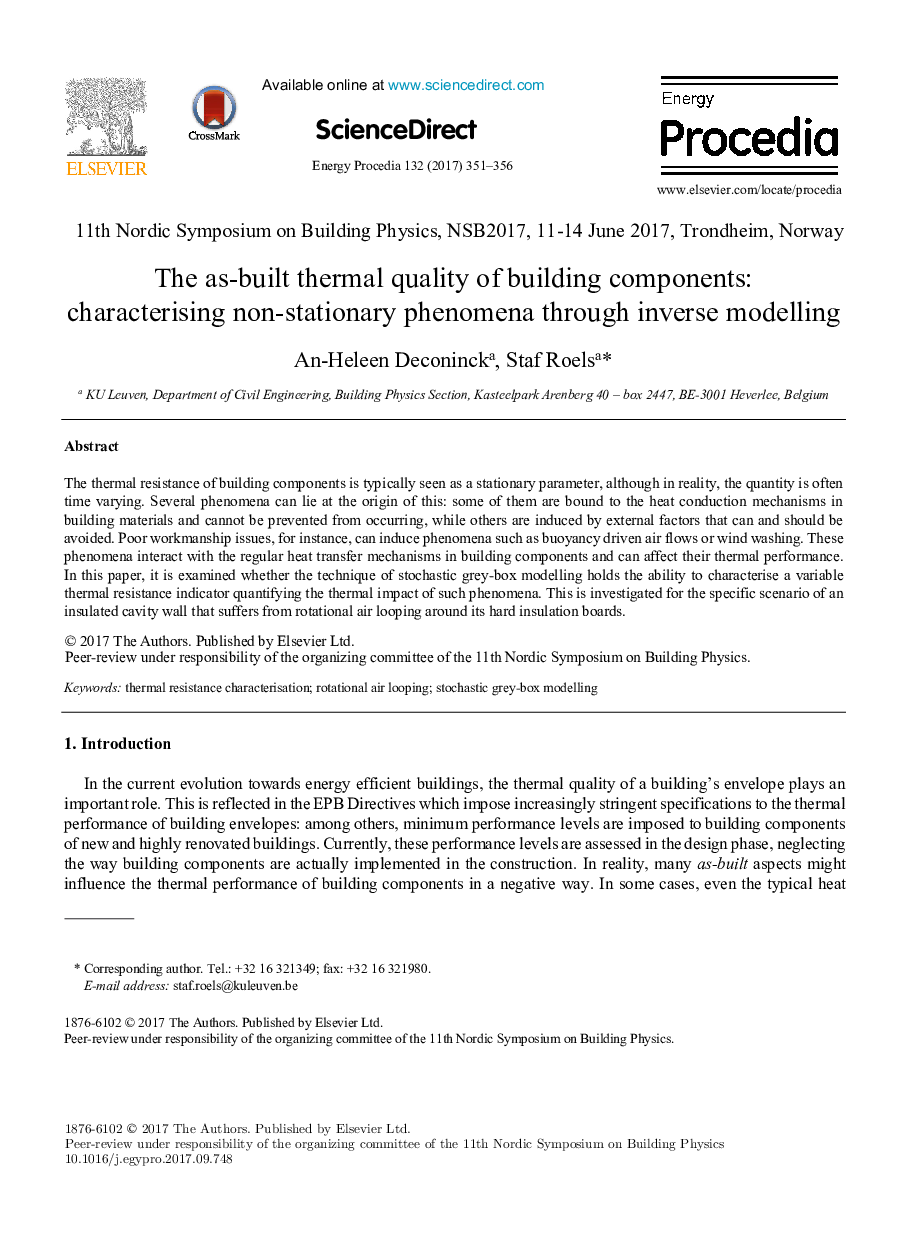| Article ID | Journal | Published Year | Pages | File Type |
|---|---|---|---|---|
| 7919283 | Energy Procedia | 2017 | 6 Pages |
Abstract
The thermal resistance of building components is typically seen as a stationary parameter, although in reality, the quantity is often time varying. Several phenomena can lie at the origin of this: some of them are bound to the heat conduction mechanisms in building materials and cannot be prevented from occurring, while others are induced by external factors that can and should be avoided. Poor workmanship issues, for instance, can induce phenomena such as buoyancy driven air flows or wind washing. These phenomena interact with the regular heat transfer mechanisms in building components and can affect their thermal performance. In this paper, it is examined whether the technique of stochastic grey-box modelling holds the ability to characterise a variable thermal resistance indicator quantifying the thermal impact of such phenomena. This is investigated for the specific scenario of an insulated cavity wall that suffers from rotational air looping around its hard insulation boards.
Related Topics
Physical Sciences and Engineering
Energy
Energy (General)
Authors
An-Heleen Deconinck, Staf Roels,
